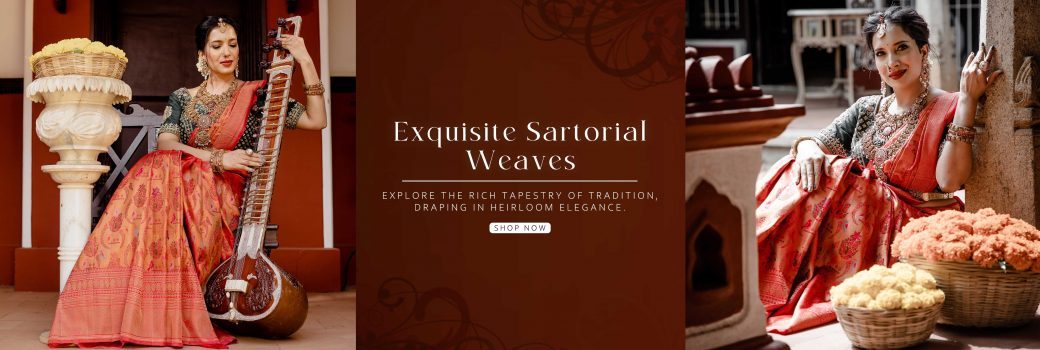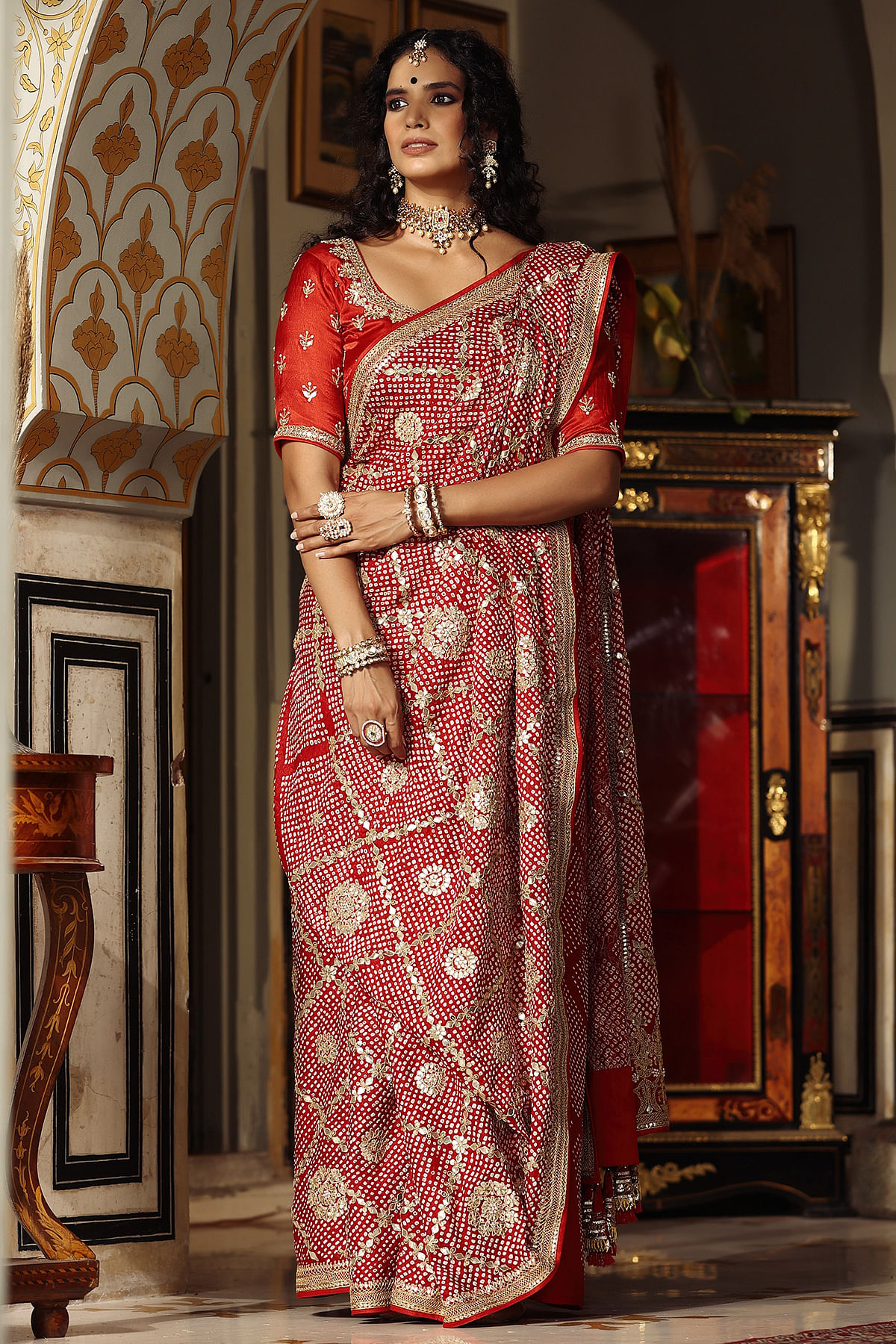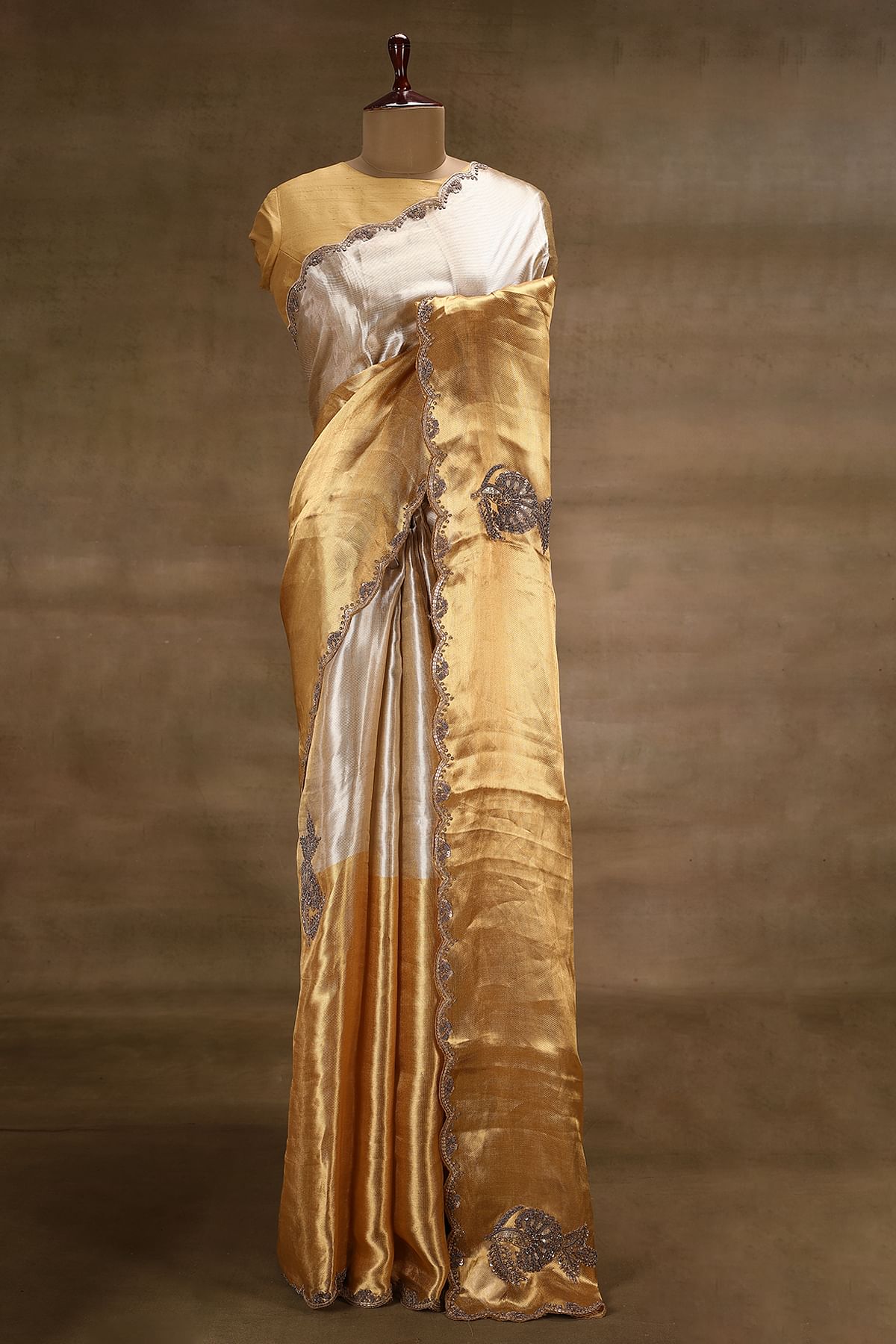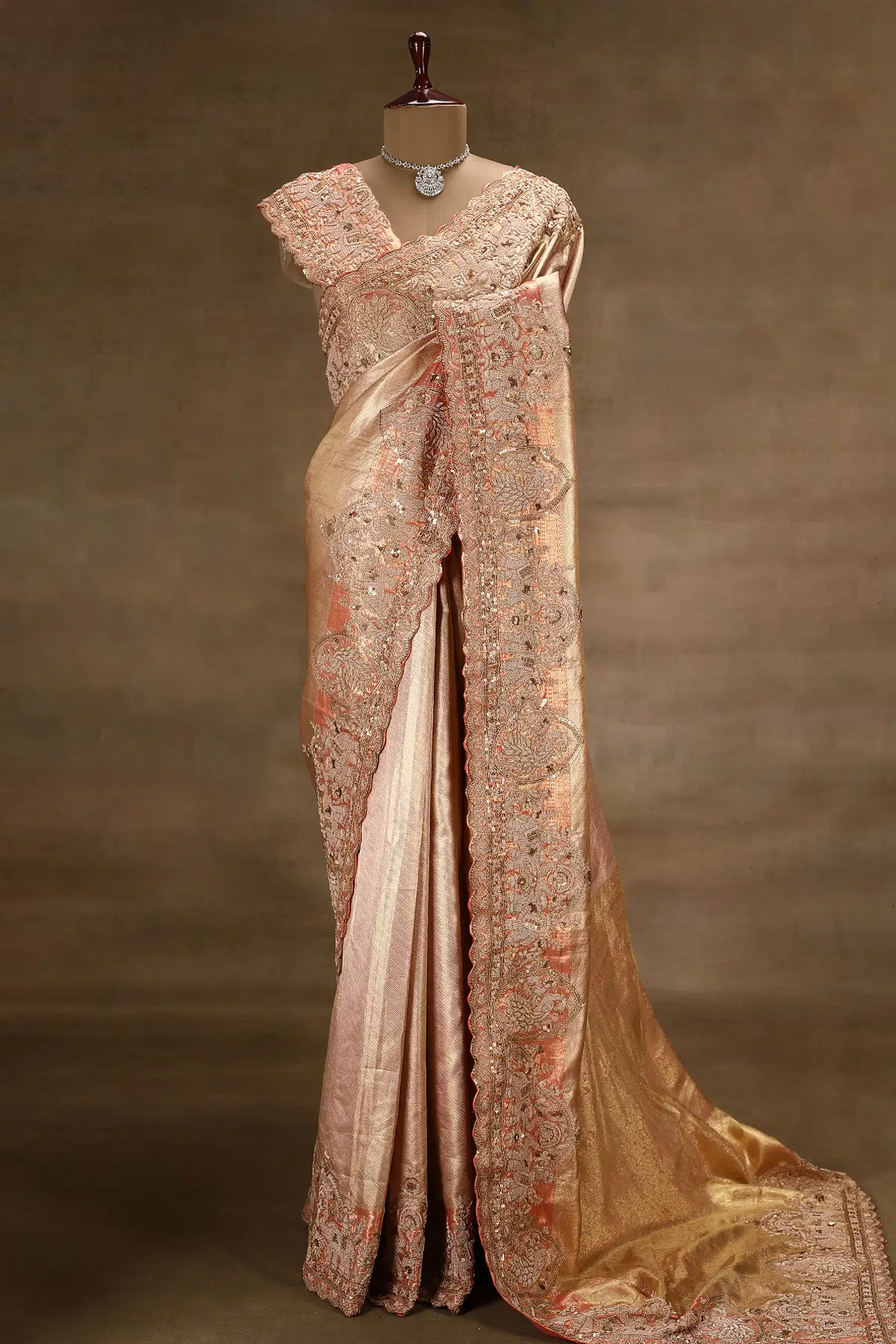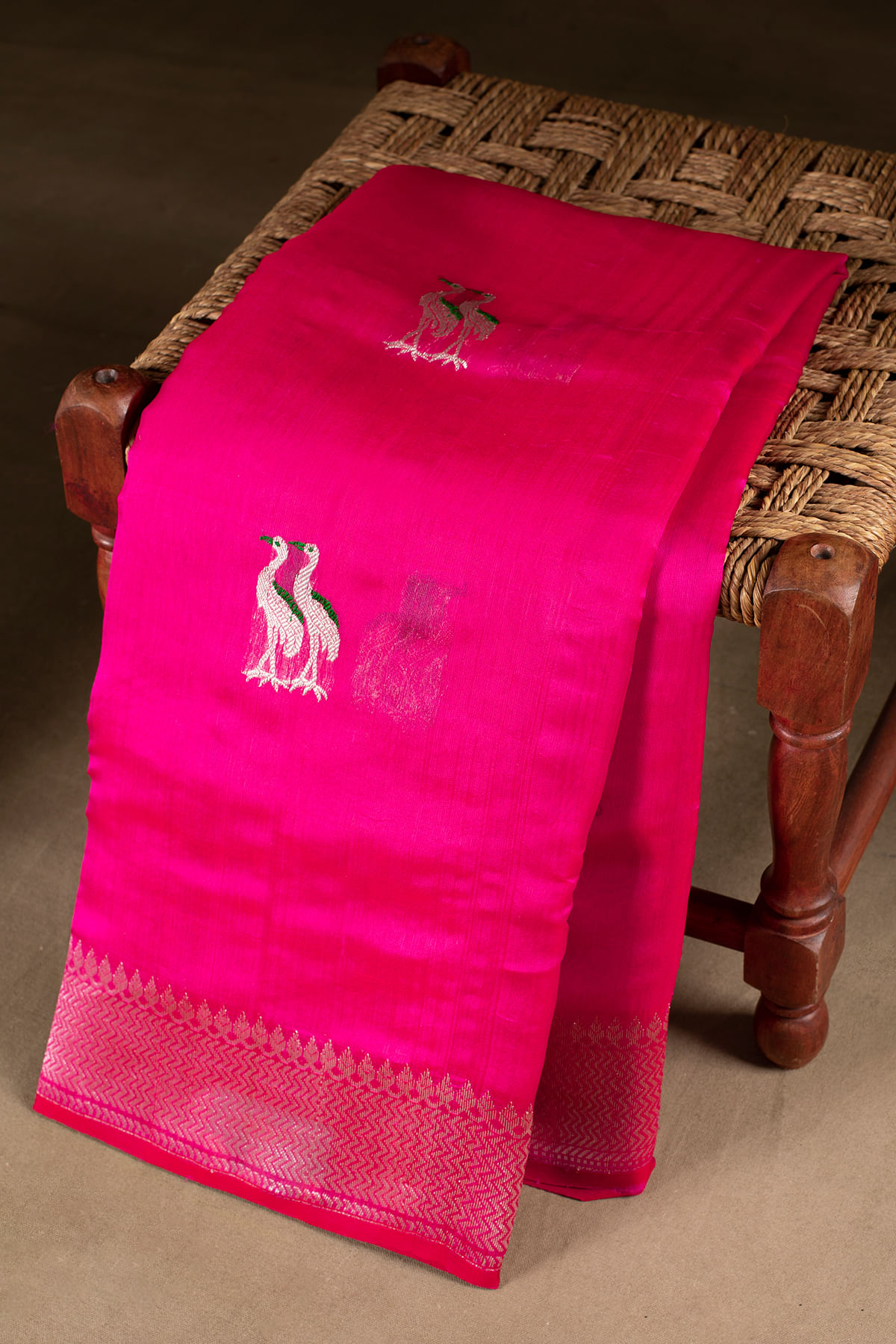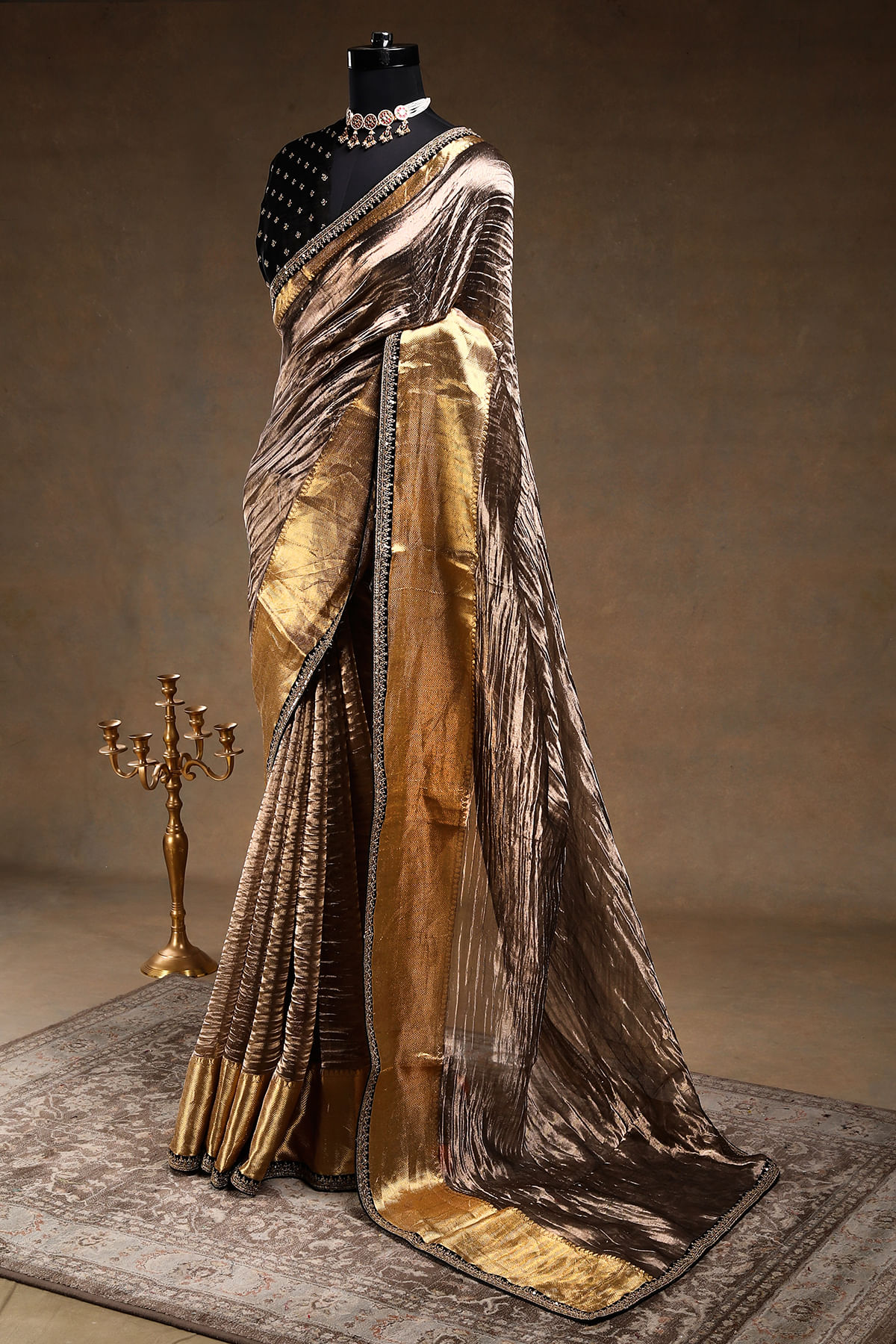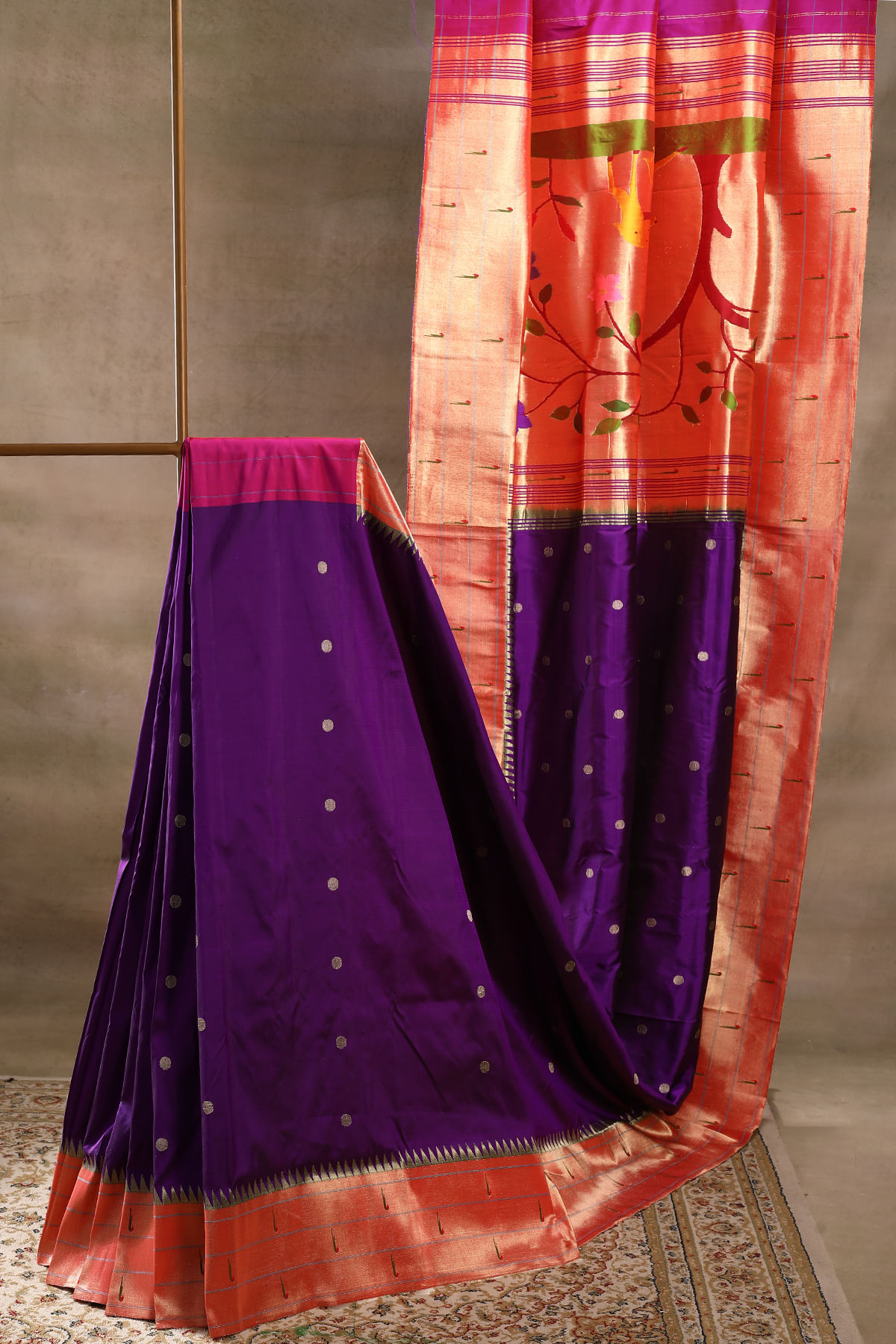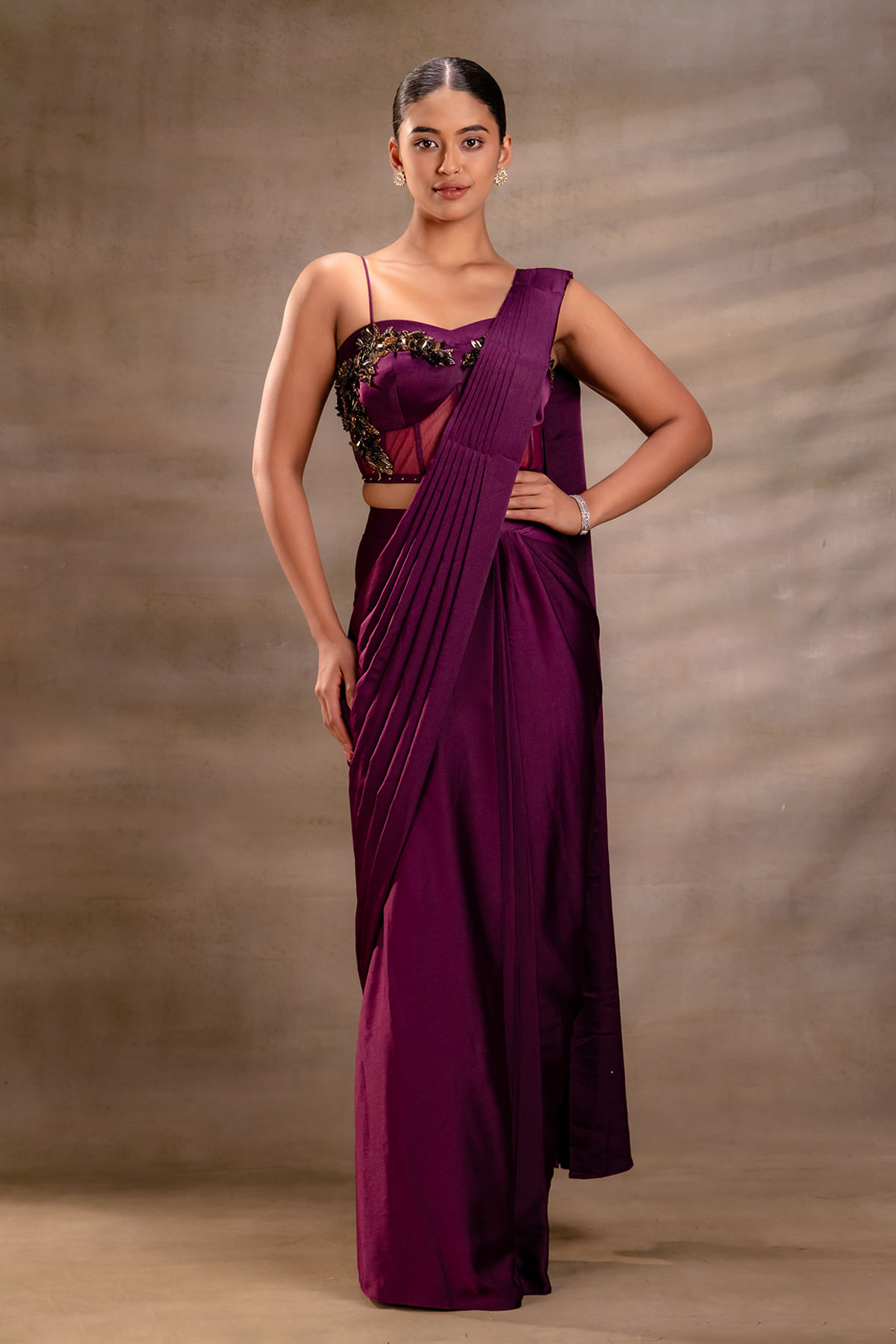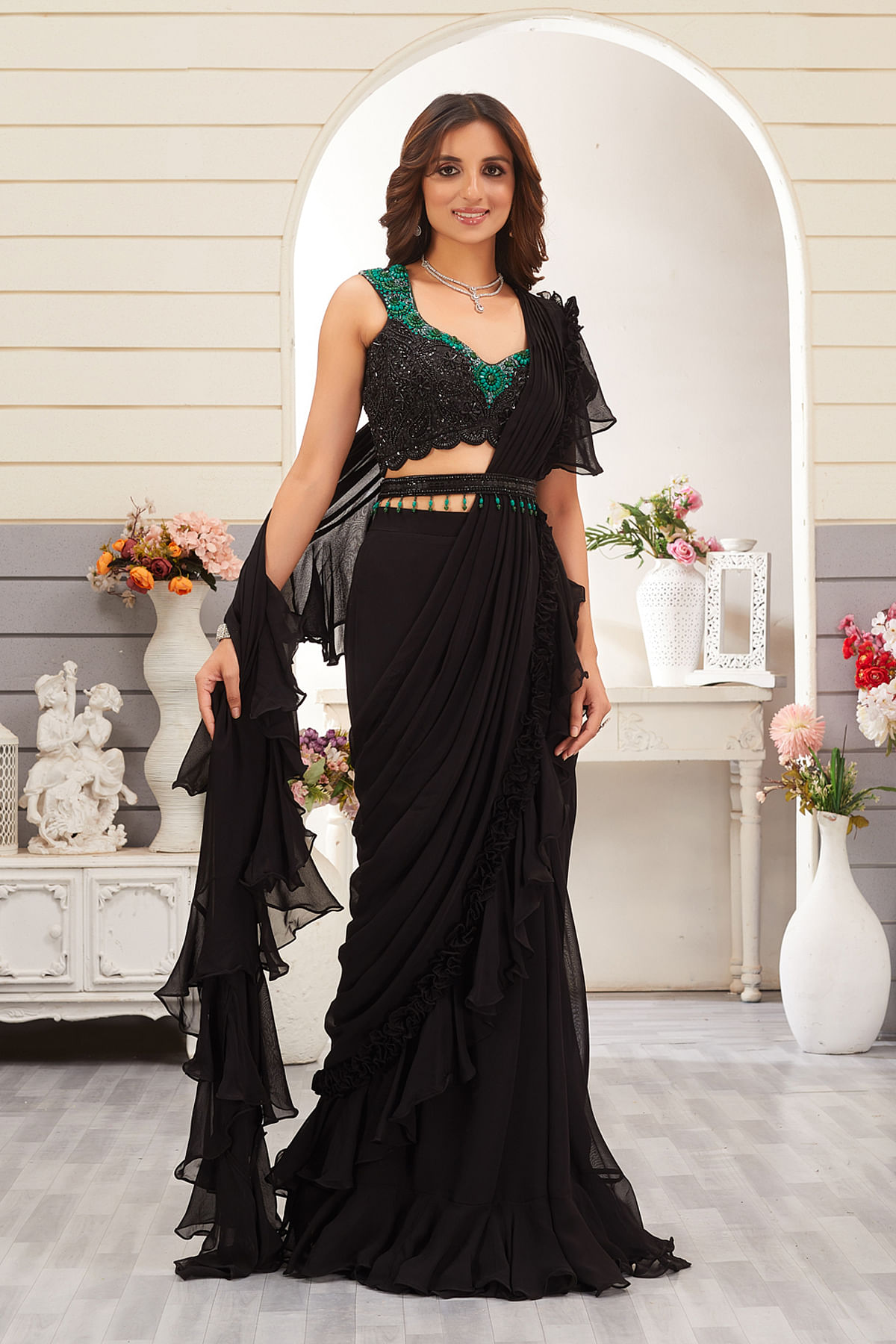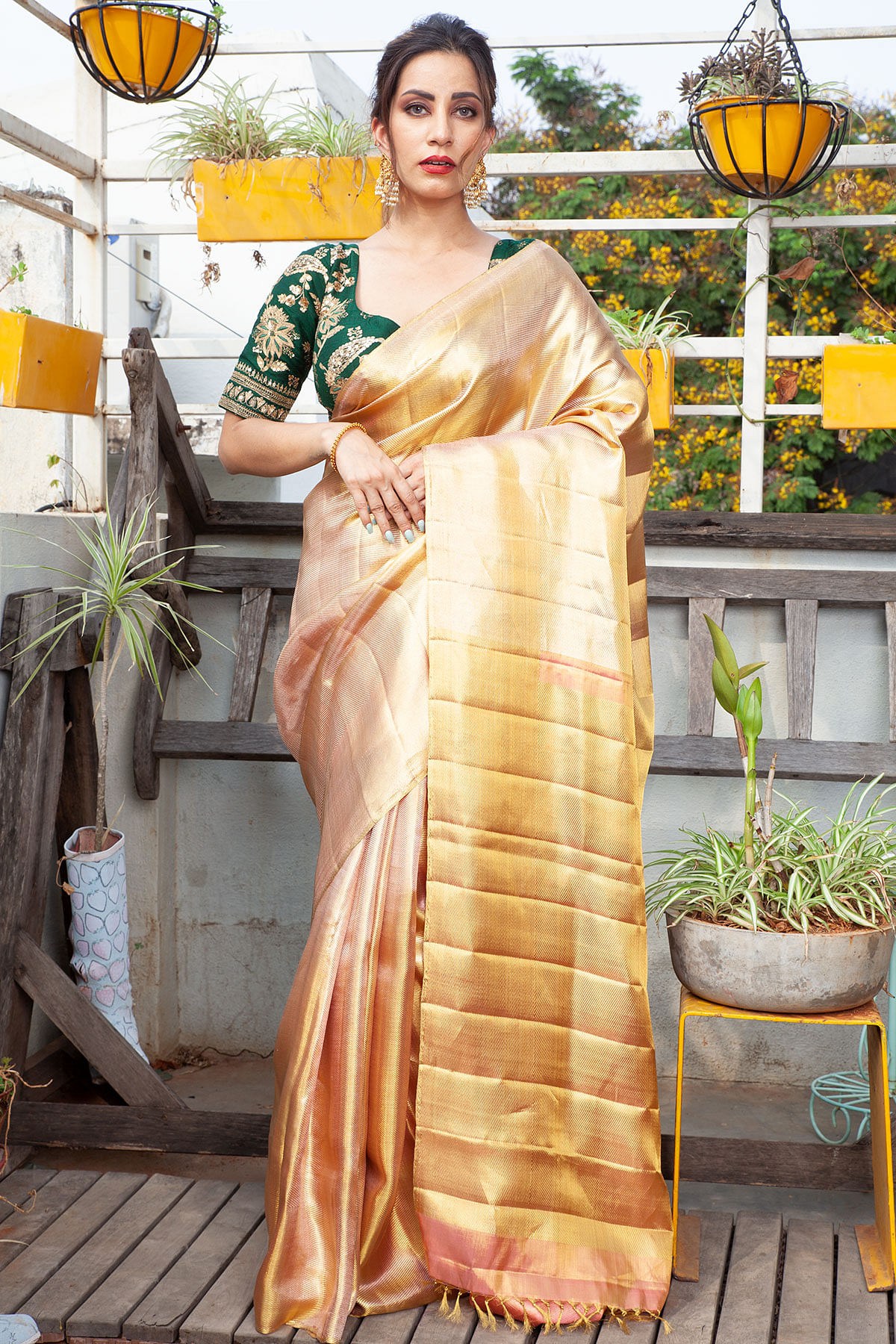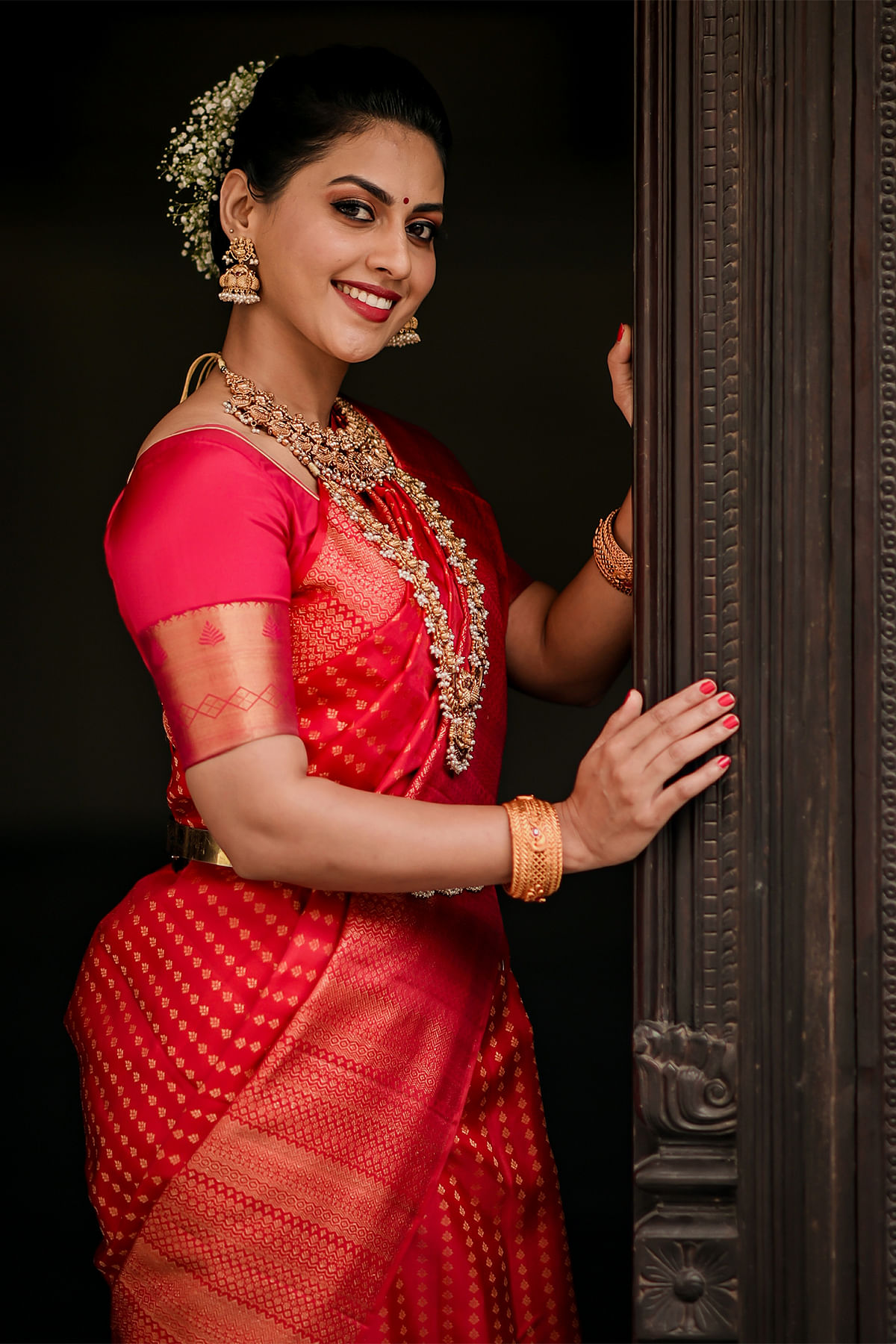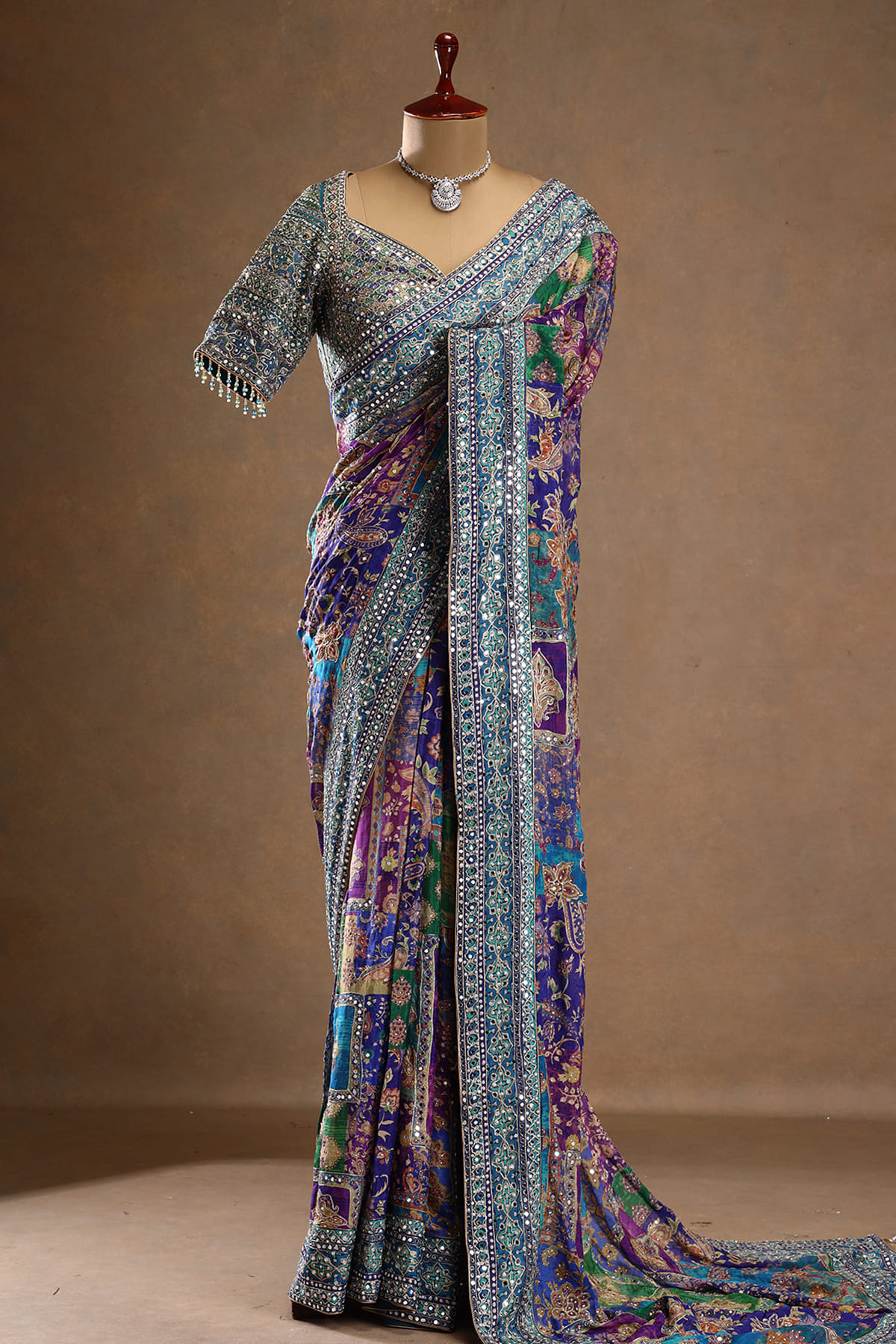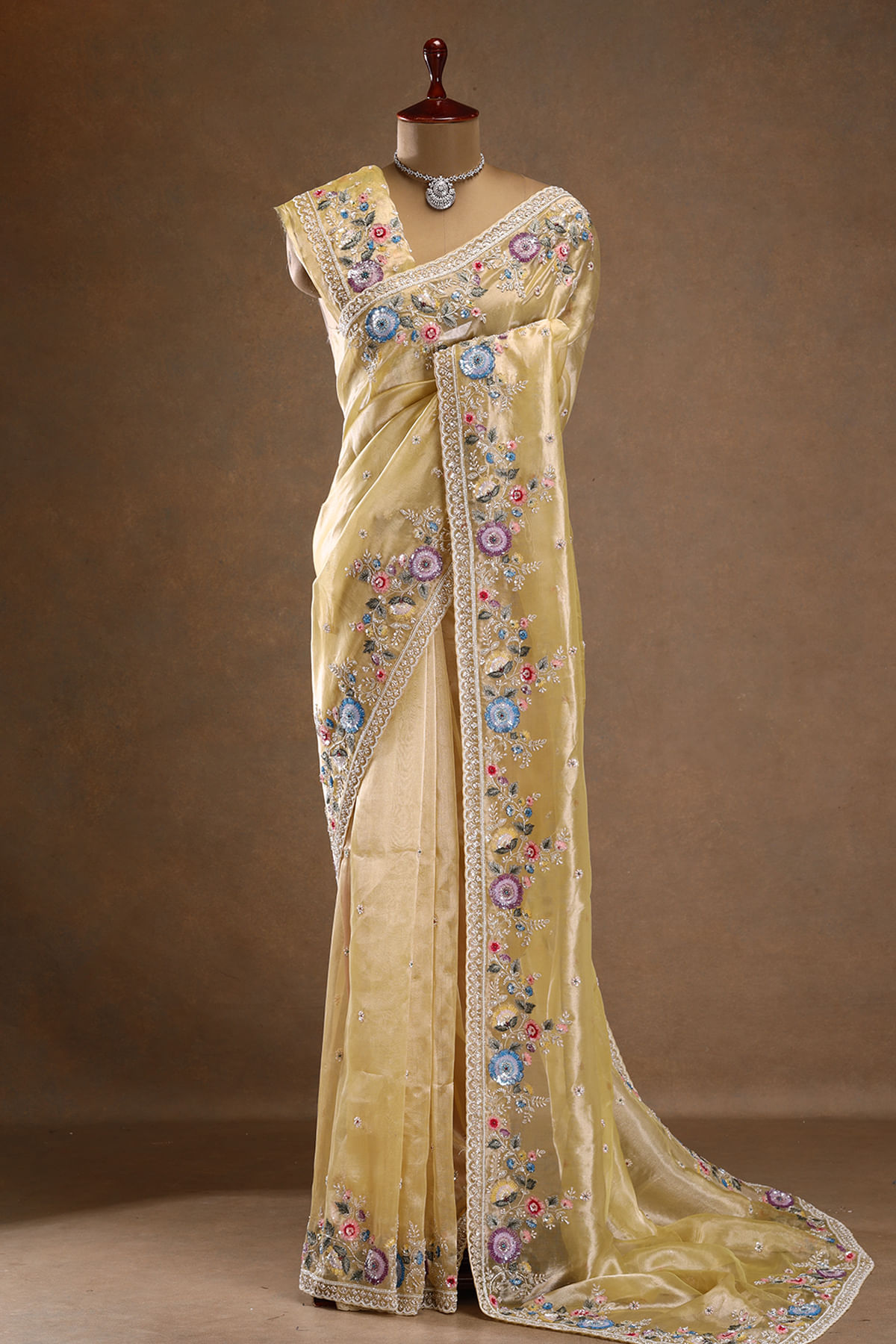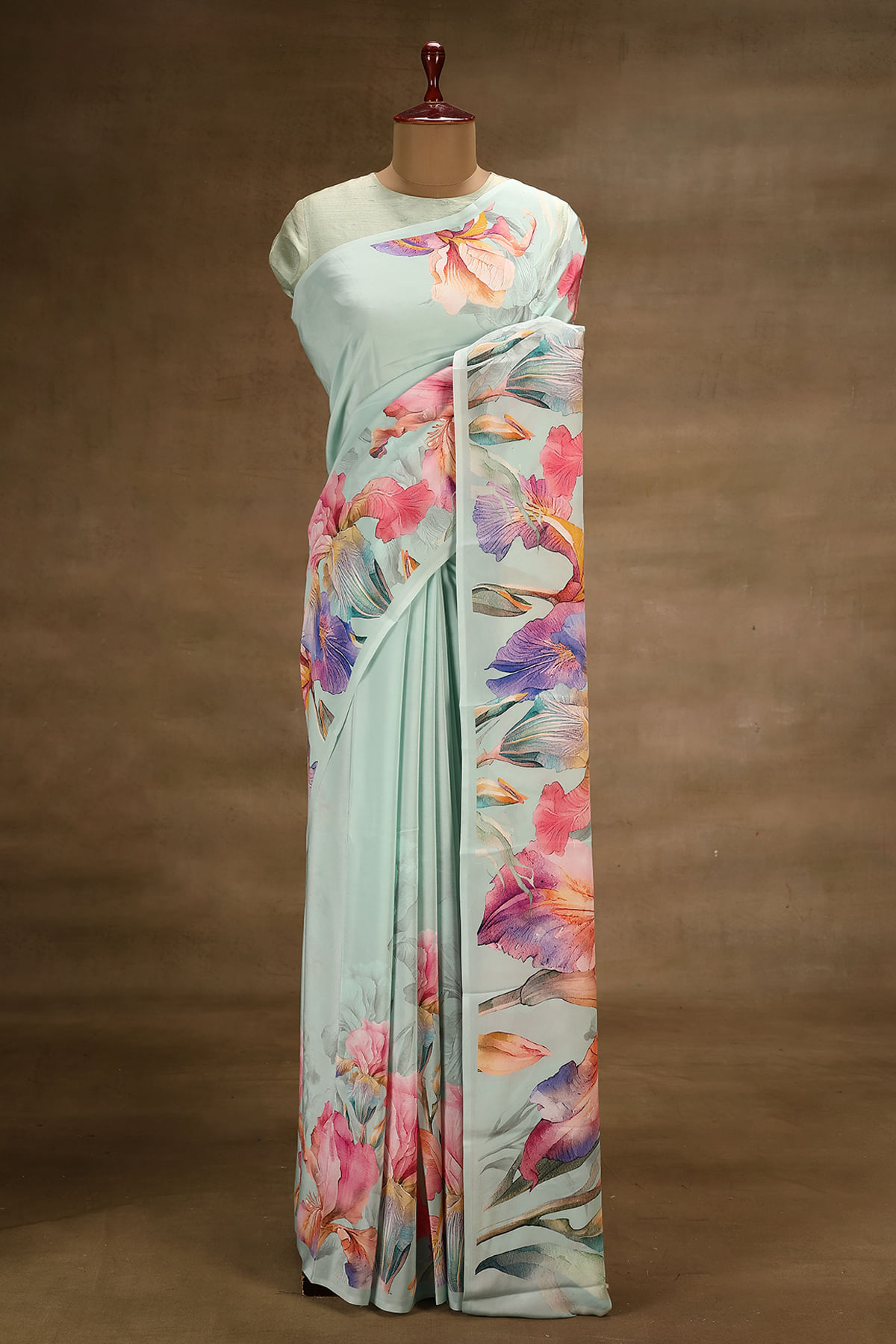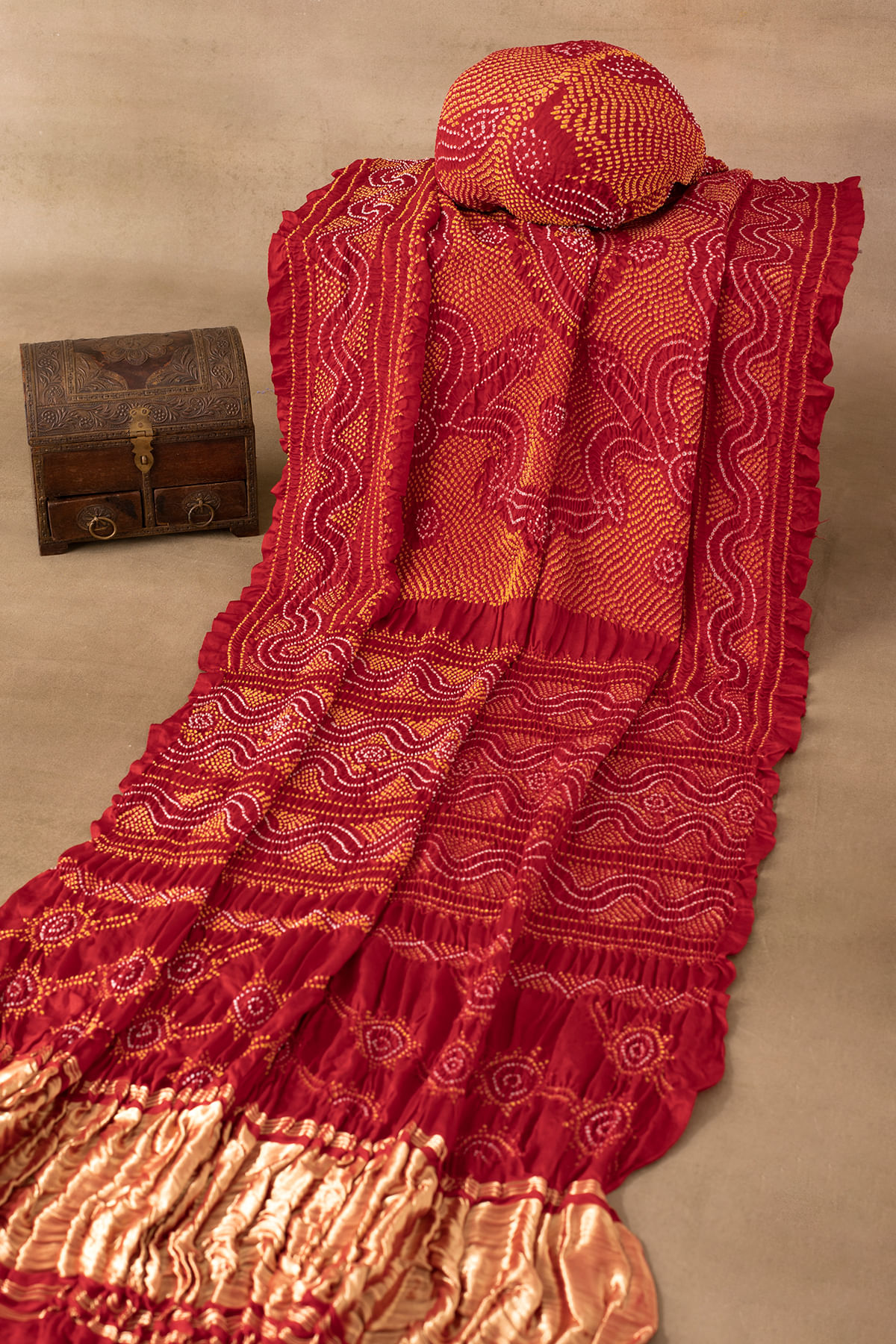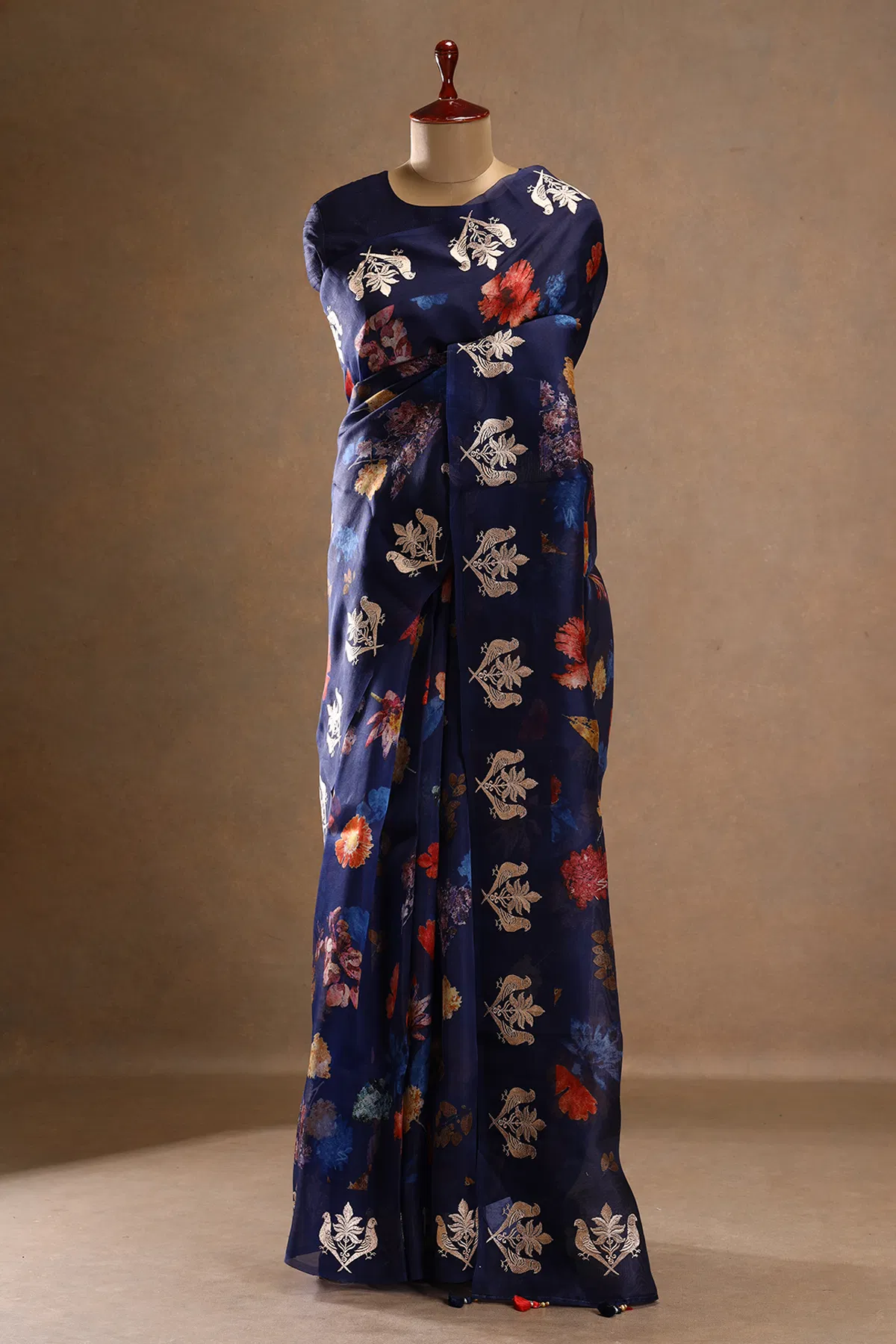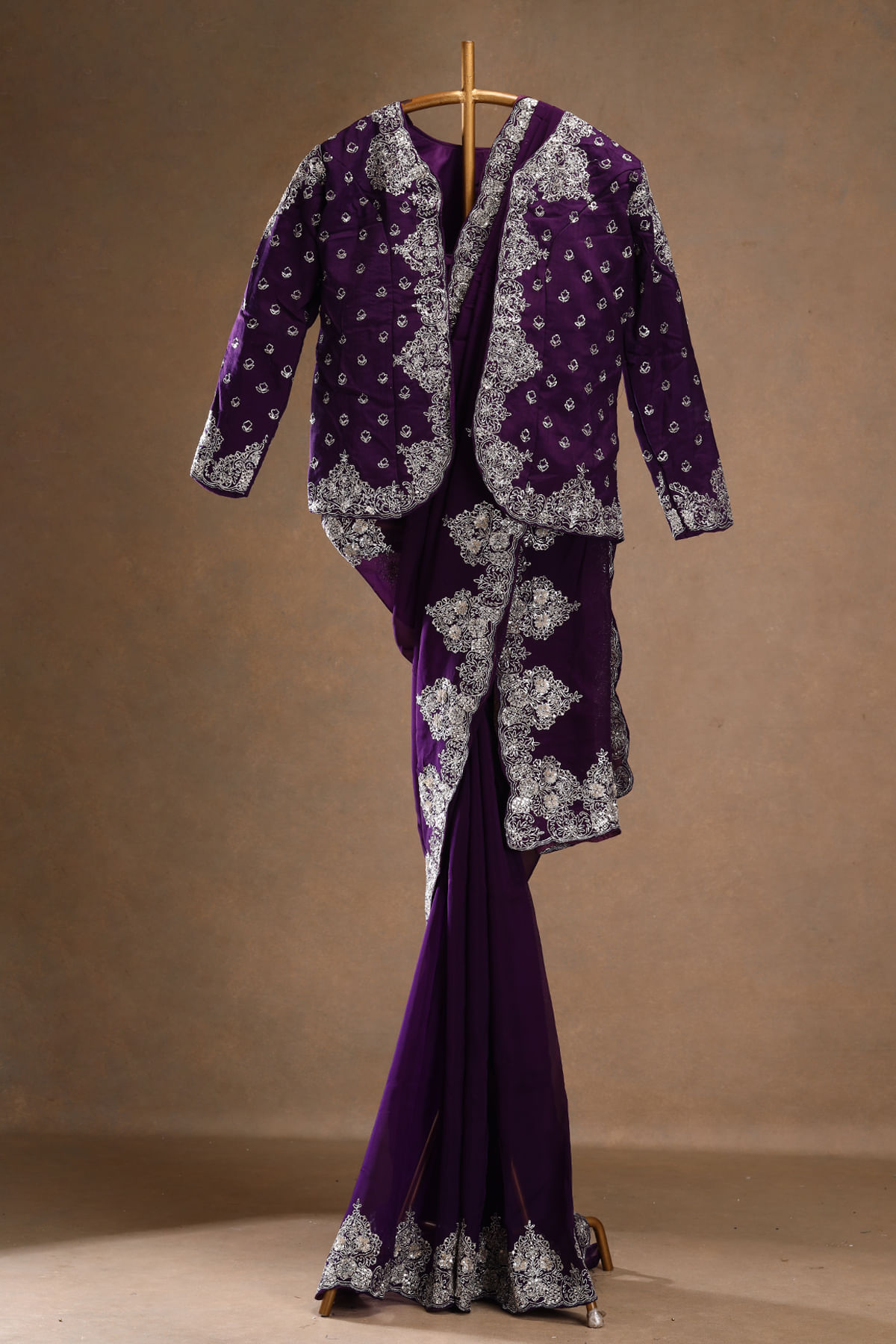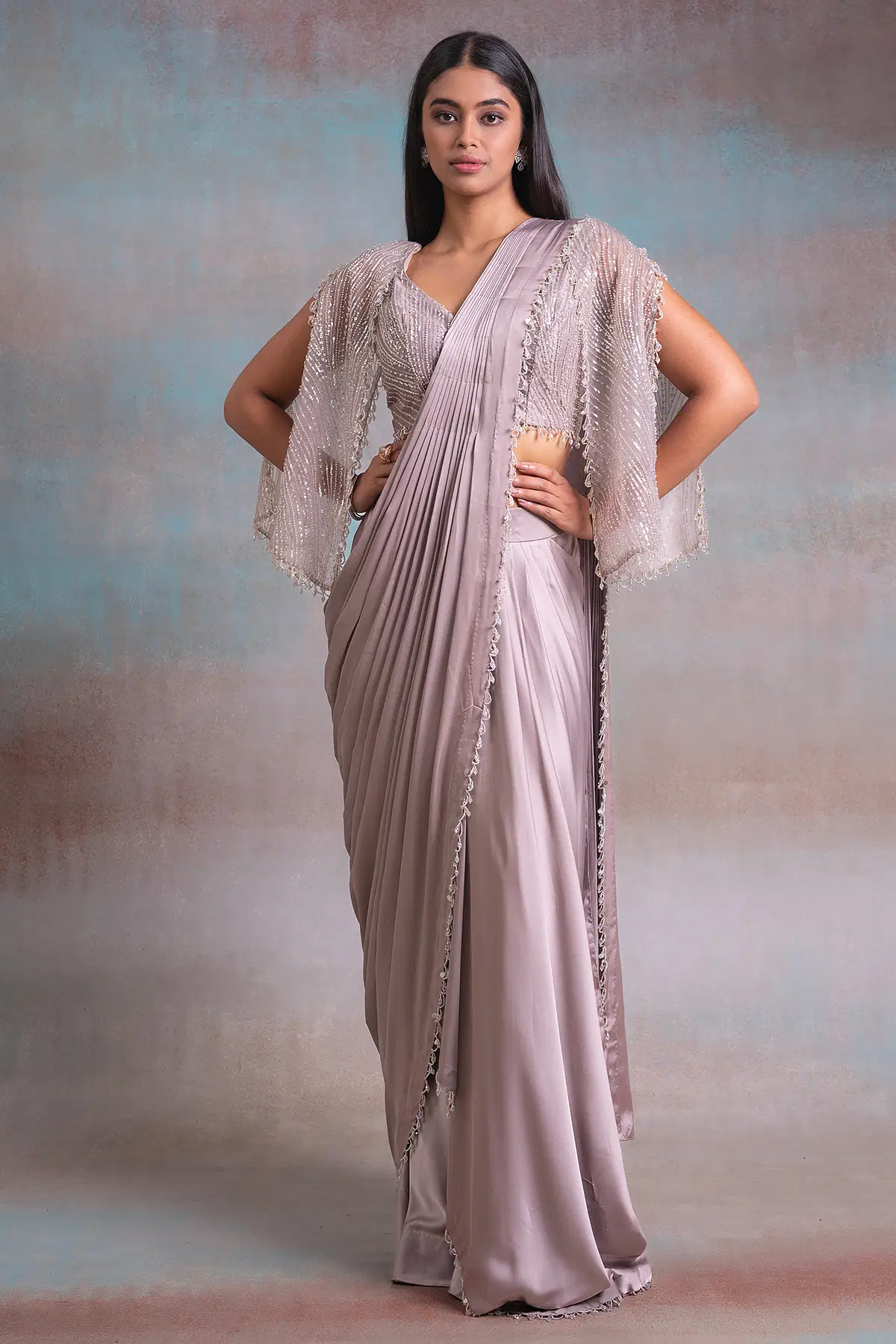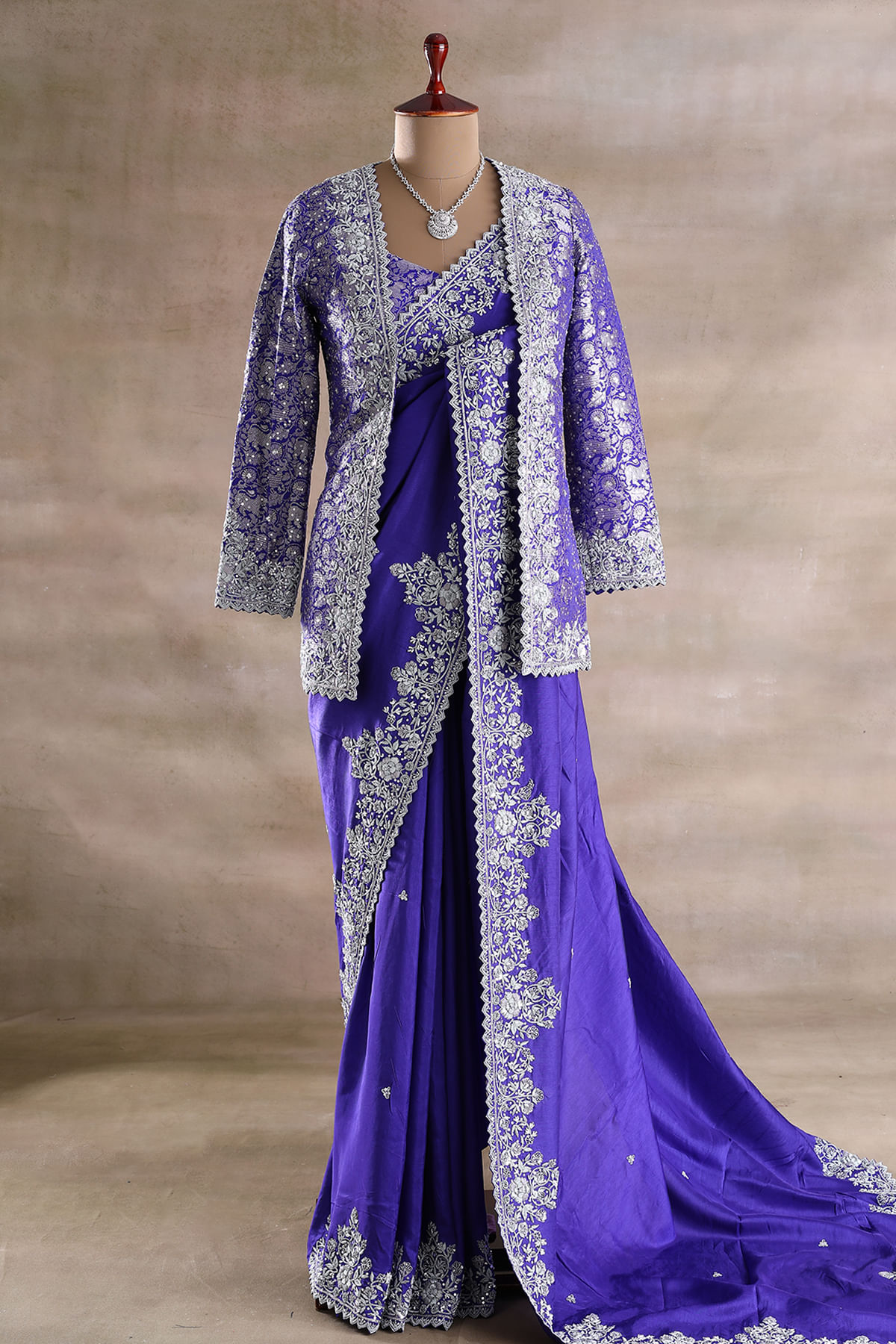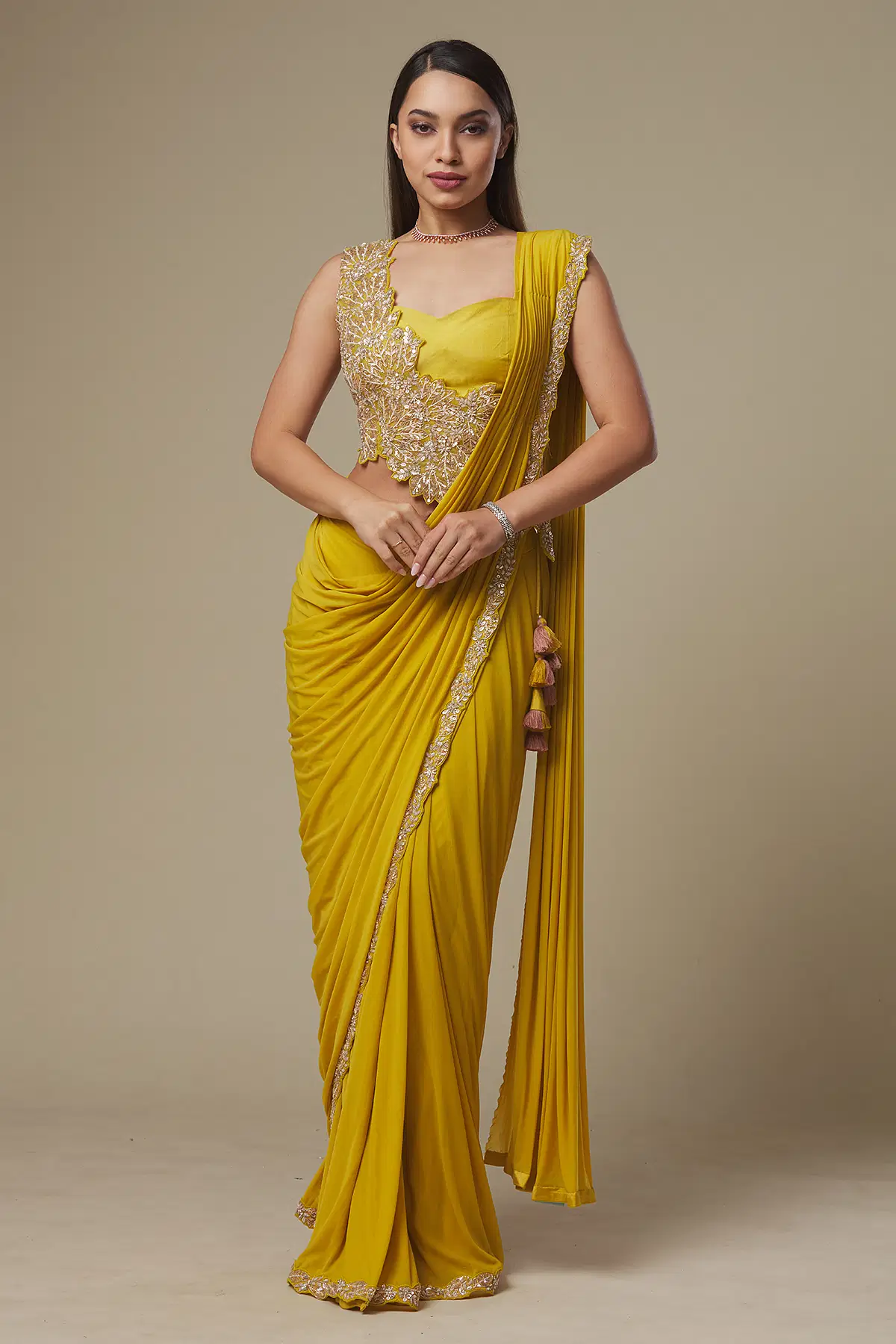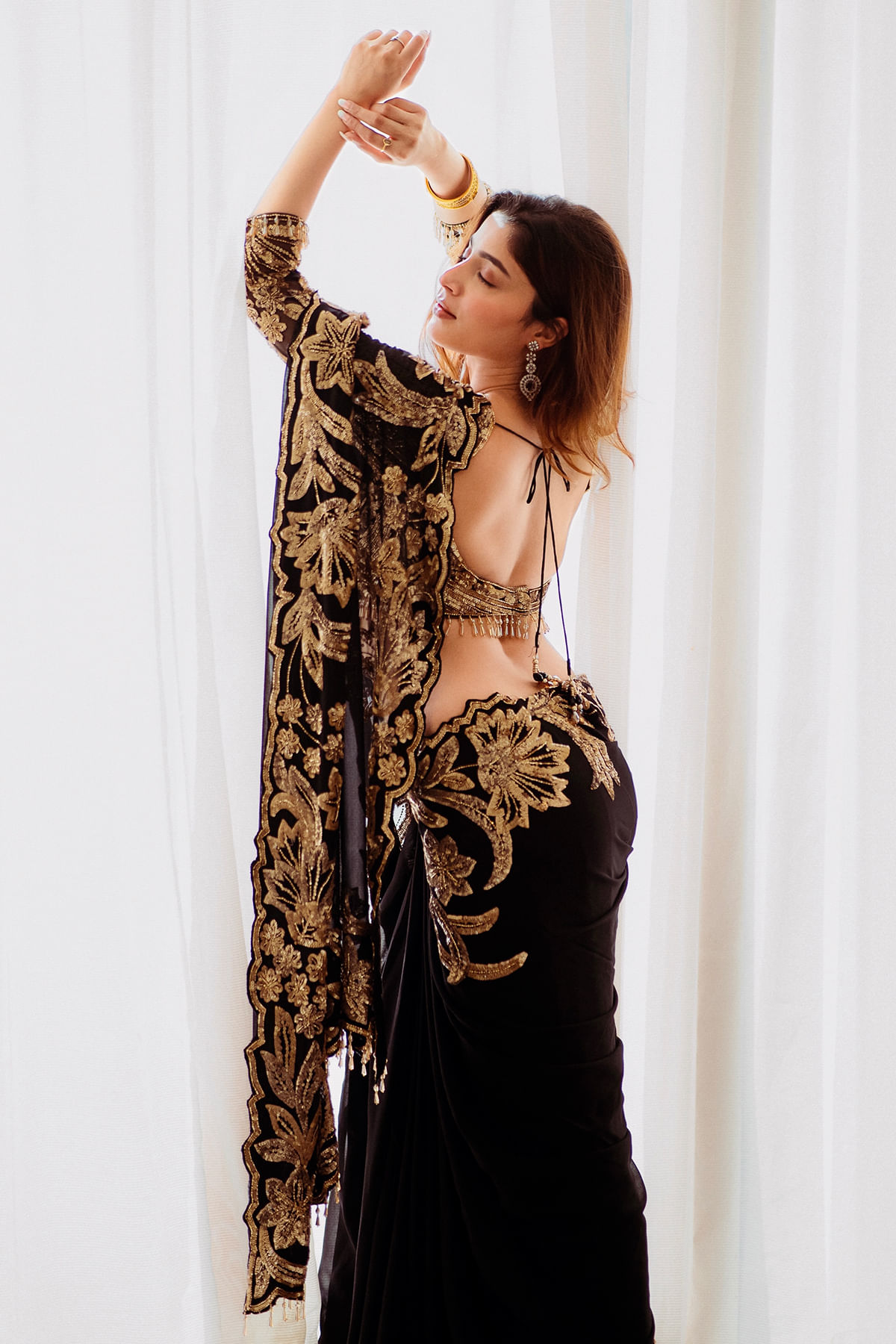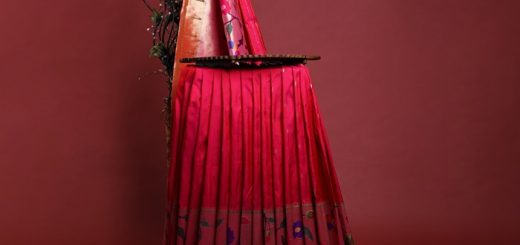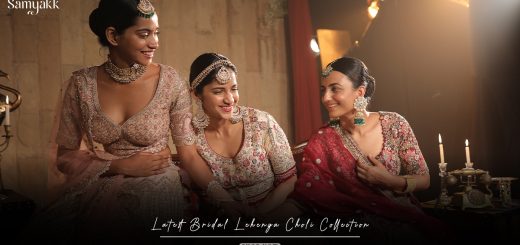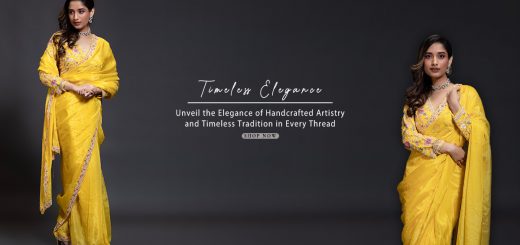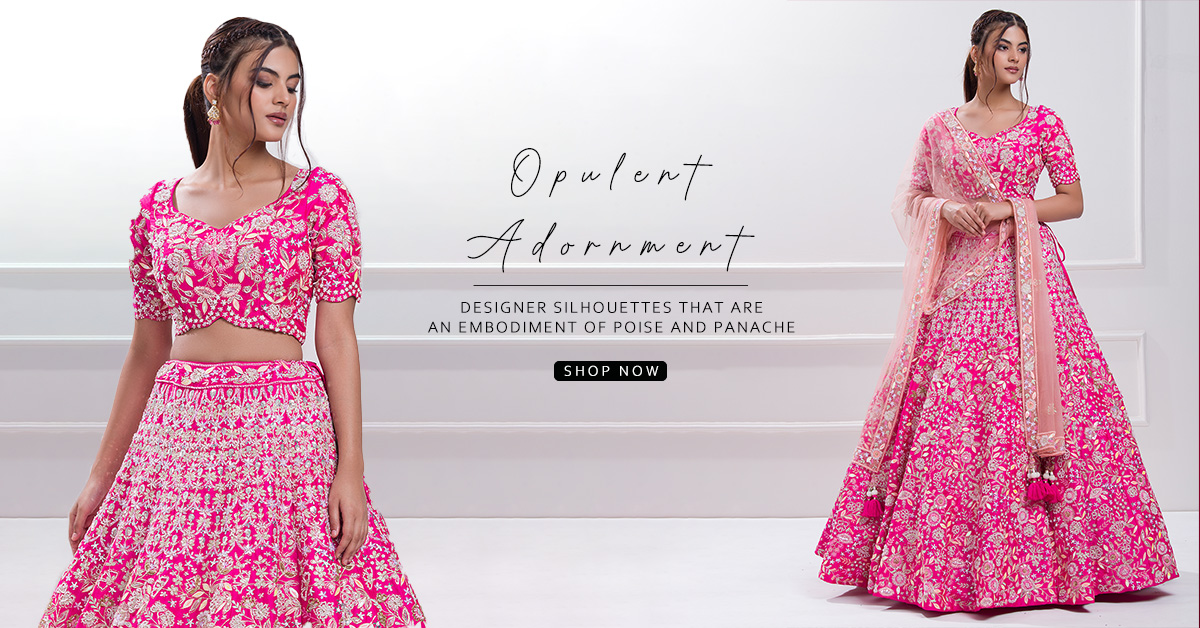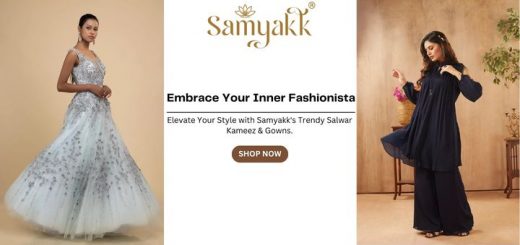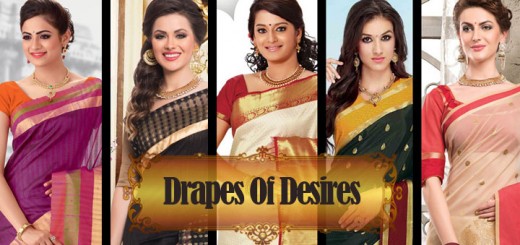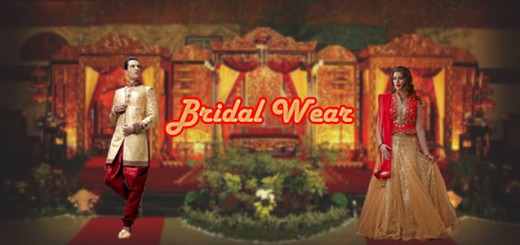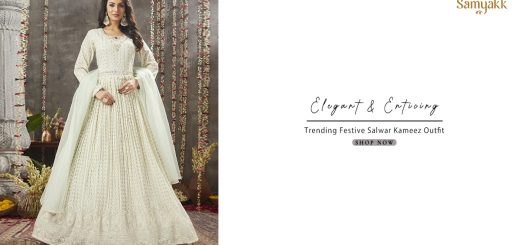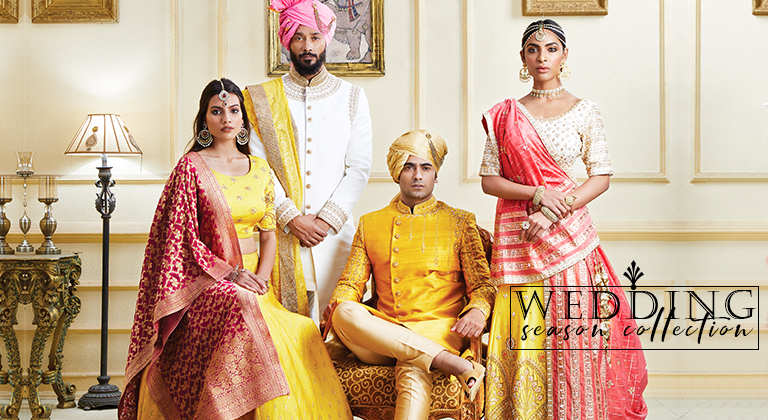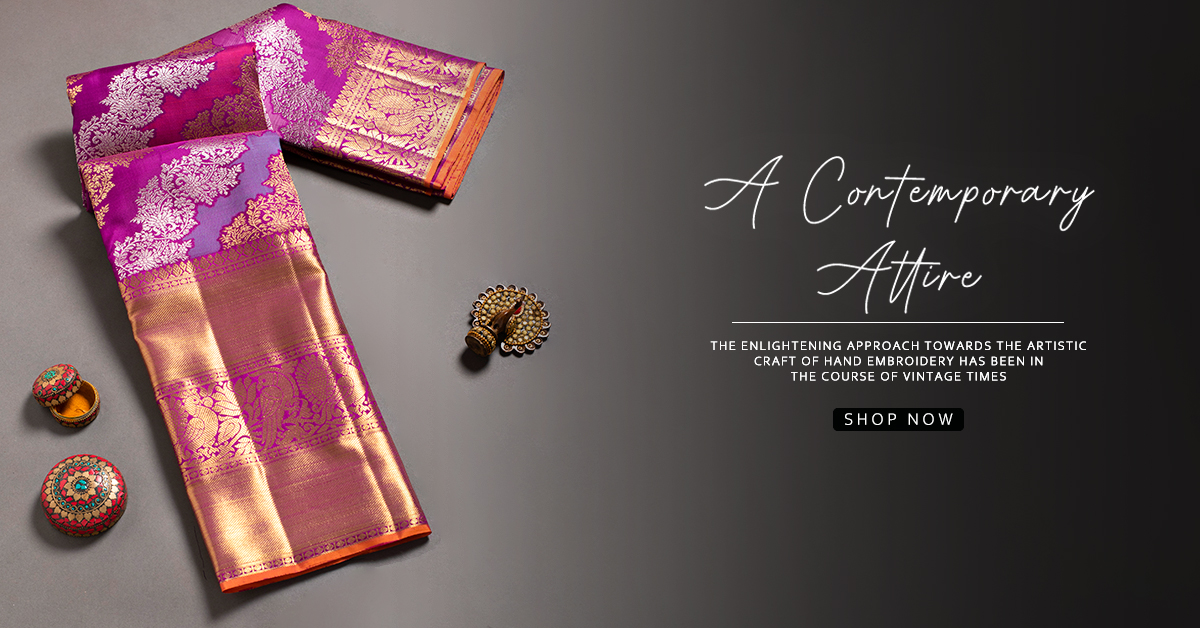The Saree Saga: From The Ancient & Historic Roots To Global Appeal
Sarees are not just mere pieces of clothing. They rise above fashion and hold a place in every woman’s heart. Saree is a celebration, and it can symbolize many aspects of a woman’s life. For a mother, a saree is an aanchal or pallu; for a working woman, it is professionalism and grace; for a diva walking the ramp, it signifies glamour; for beginners, it is learning, and for a middle-aged woman, it is undoubtedly her world. Hence, we see that the saree occupies a profound space in the Indian landscape. In that note, let us celebrate the saree for its art form, traditional value, grace, cultural aspect, and glamour. As every fold is worth adoring, let us unfold the many facets of sarees, including their history, traditional significance, and the types.
What Is A Saree?
A saree is a six or nine-yard unstitched fabric that features prints, embroidery, a border, a decorated pallu, and vibrant colors. It is a long traditional piece of cloth draped by women in the Indian subcontinent. A saree can be draped in various styles depending on the tradition, culture, and region. Saree draping styles, pallu, front pleats, borders, shoulder pleats, underneath skirts or petticoat, and matching blouses are various components of a saree that make it complete and wearable.
Symbol Of Indian Heritage
Women who drape a saree embrace the cultural richness of India. Sarees are a reminder of traditional values, a symbol of ‘female’ identity, and an expression of heritage. The roots of sarees go back to the Indus Valley Civilization and showcase the diverse artistry and craftsmanship of India. Regardless of which region or state she belongs to, she wears it with pride and grace. Millions of women adorn themselves with banarasi sarees, handloom sarees, Kanchipuram sarees, kota silk sarees, and pashmina sarees that carry the essence of India. The versatility of sarees is unmatched, as a saree can be found anywhere – busy markets, malls, offices, festivals, weddings, ramps, and the appearances of Bollywood stars on and off screen. Sarees carry emotions, memories, a connection, and history.
History Of Sarees
The word saree has originated from the Sanskrit word ‘saadi’, which means a strip of cloth. The journey of sarees began during the Indus Valley Civilization, around 2800 BC. A well-established culture of civilization has records of fabrics like silk and cotton, as well as literary works by many court poets and scholars, such as Banabhatta, that mention the details of sarees. There was a wide usage of sarees by women during that period, and literary works stand as proof.
One of the earliest representations of sarees can be found in ancient sculptures and statues from the Gandhara region (present-day Pakistan). After this, sarees have travelled through many centuries and have seen transformations in terms of color, embroidery, print, weaving methods, dying, etc. Saree helps each woman enliven a rich lineage of the past.
Transformation and Evolution
Culture, economy, environment, and social factors have heavily influenced the transformation of sarees in the past centuries. There have been diverse saree styles, based on color, fabric, weaving style, embroidery, border, embellishments, etc. The journey of sarees began with cotton around the 5th millennium B.C. Later, during the royal eras of the Gupta period and the Mughal period, the queens and royal women started preferring sarees with expensive stones, gold threads, resham, and mirror embellishments for their status symbols. These royal sarees with decorative elements and rich work made them stand out from ordinary women.
Later on, with industrialization entering India and foreign influence, workers and craftspersons started using new techniques in saree making. India got an unimaginable variety with the latest techniques in printing, dyeing, and weaving. The experts started crafting sarees featuring the latest designs and prints.
Classic & Luxurious Sarees
Wearers who appreciate craftsmanship, art, and elegance, opt for handloom sarees, Gadwal sarees, Paithani sarees, chanderi sarees, kalamkari silk sarees, and other luxurious weaves. They prefer these masterpieces for weddings, festivals, and other grand occasions. Apart from enduring the beauty, they showcase their pride and confidence in Indian culture and heritage. Silk sarees, georgette sarees, banarsi sarees, and Kanchipuram sarees are crafted with love, labour, and luxury weaves and are majestic choices for women to define India’s soul.
Modern Sarees
Saree designs and styles have evolved to cater to modern tastes while retaining the ethnic elements. There are newer ways to drape a saree, and fashion-forward accessories like belts and jackets are added to sarees to make them appealing. Women opt for designer blouses with statement sleeves for versatility in styling. Lightweight sarees, Indo-Western sarees, and sarees with stylish blouse designs appeal to the younger generation. Sarees have adapted to modern sensibilities, courtesy fashion designers, social media influencers, and Bollywood divas. From red carpets to international ramps, sarees have evolved, but their essence of traditional value and Indian culture remains unchanged. It celebrates femininity with its bright hues, embroidery, embellishments, and other decorative and stylish elements.
Various Types Of Sarees At Samyakk
Classic Sarees- It is like a ritual for every Indian woman to flaunt splendid sarees in fine fabric. Silk sarees, Paithani sarees, handloom sarees, banarasi silk sarees, Upadda sarees, chanderi sarees, and organza sarees are timeless classics for women to flaunt at weddings and grand occasions.
Embroidery Sarees- Heavy sarees featuring embroidery, mirror work, gota, zardozi, mirror and cut-dana work boast of Indian culture and creativity. The bandhani sarees, the leheriya sarees, mirror work sarees, sarees with abla work, and floral embroidery are admired for cultural values and intricate craftsmanship. Georgette, chiffon, and crepe sarees are a few of the gems that women can rely on for the festive gatherings. These sarees can add character and loads of fun at festivals and family events.
Printed Sarees- Printed sarees are popular for the charm and comfort they exude. Floral prints, paisley prints, buttis, batik prints, large blooms, florets, and abstract motifs appear traditional but exude modern appeal. Printed sarees are apt for daily wear, office, casual gatherings, and social events.
Party-wear Sarees- Sarees featuring satin, sequins, shimmer, metallic sheen, lycra, and modern embellishments are party-wear saree options. These are just the right choices for elaborate affairs, cocktail parties, dance nights, and even sangeet dance performances. Indo-Western sarees, drape sarees, gown sarees, sarees with capes and belts can elevate your style at parties.
Indo-Western Sarees- Jacket Sarees, belted sarees, sarees with designer blouses, cape sarees, dhoti sarees, and sarees with shrugs or pre-pleated sarees add a dramatic twist to regular styles. These sarees are unique, modern, and relatable to the contemporary world.
Global Appeal Of Sarees
We all know that sarees have undergone a transformation that is notable, remarkable, and appreciable. A traditional Indian garment is loved by women all over the world and has become a global phenomenon. Designers have experimented with the fabrics, details, blouse designs, and the shades, and offered a contemporary spin to the traditional garment.
Infact, Western influence and international fashion trends have inspired many Indian designers to incorporate global elements into the saree patterns and styles. Fashion shows, events, Bollywood appearances on the screen and off-screen have increased the visibility of sarees. Overall, there are many key players in highlighting the beauty, importance, and versatility of the Indian sarees.
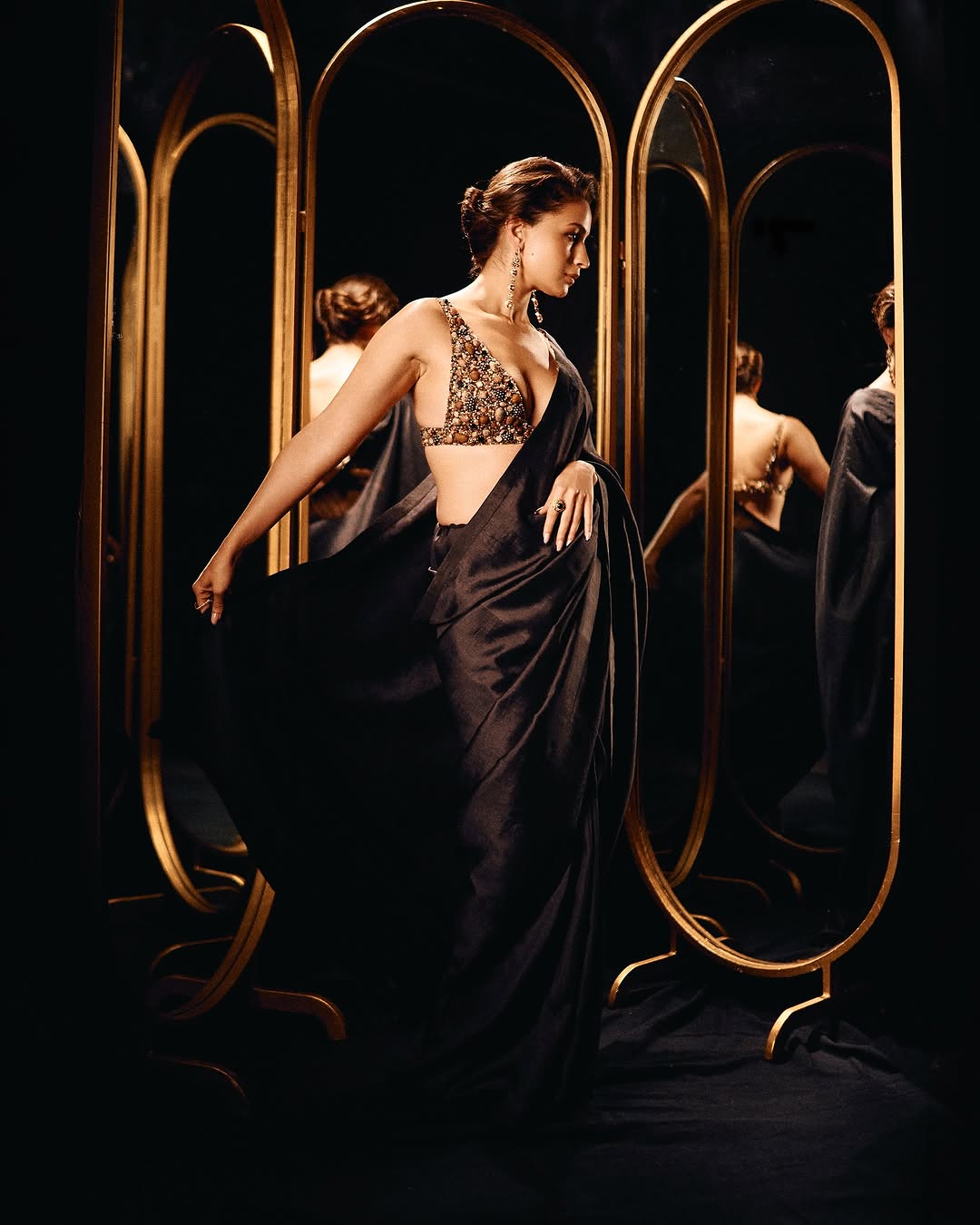
Image Source : Instagram
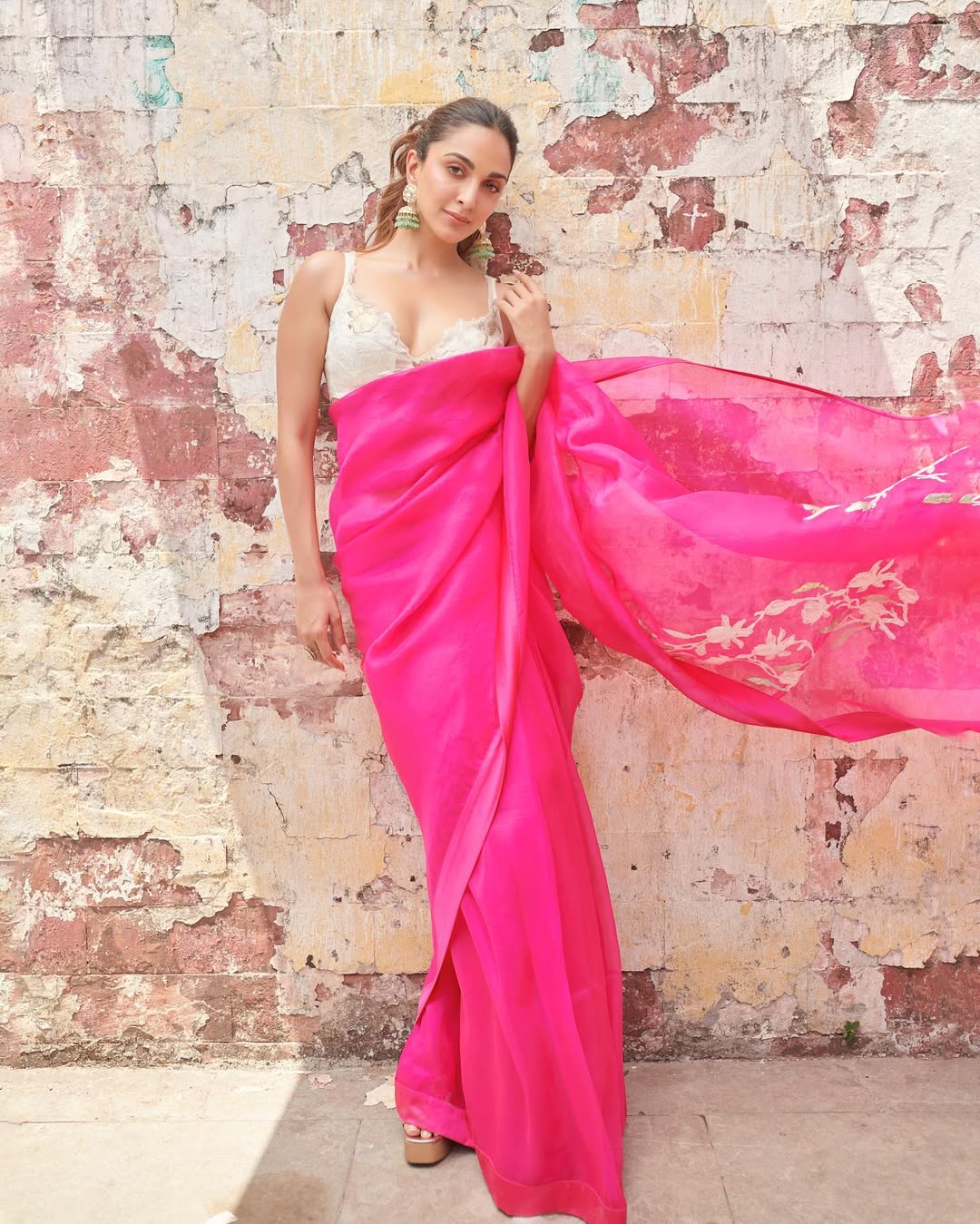
Image Source: Instagram
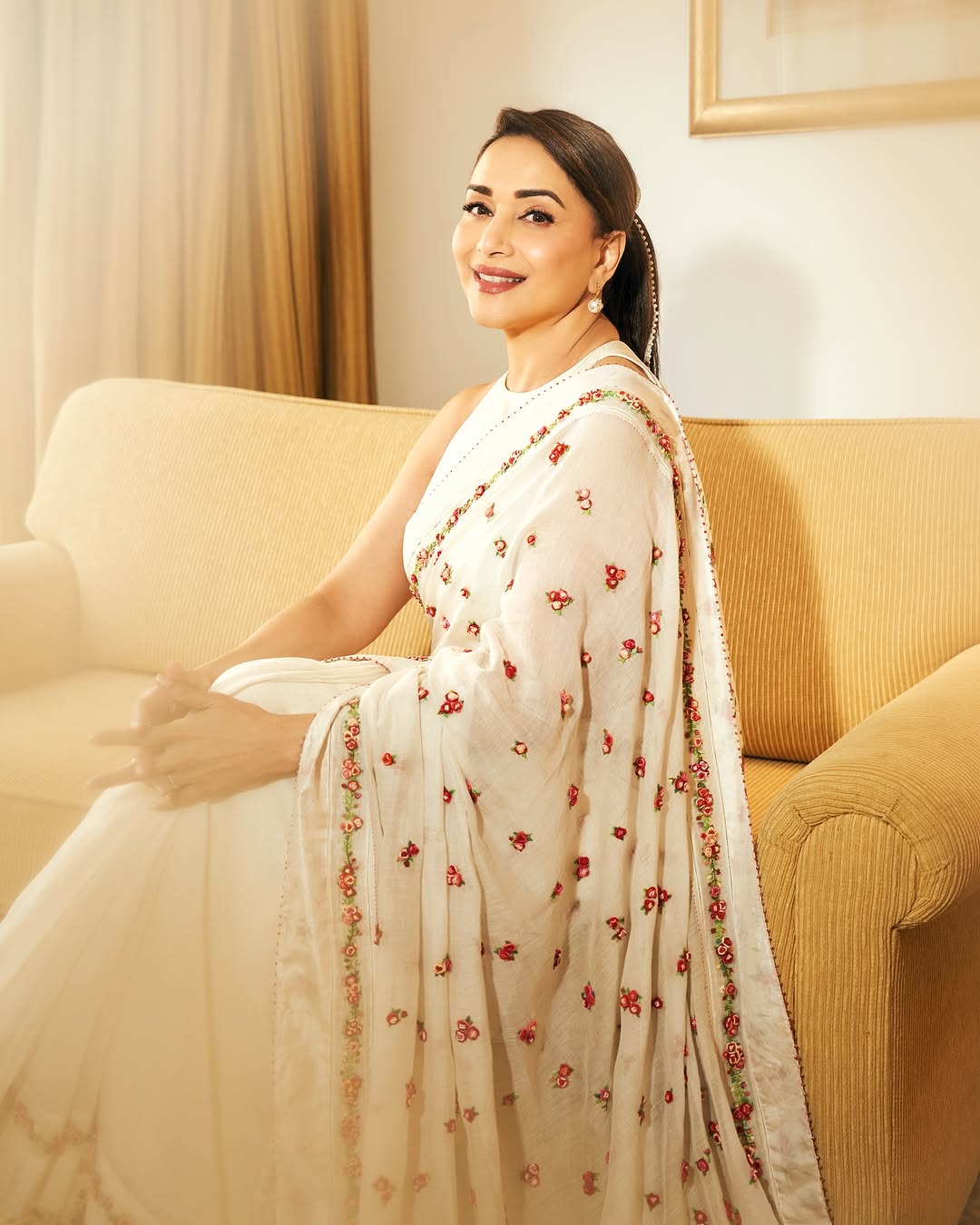
Image Source: Instagram
At Samyakk, there is a wide variety of sarees for all occasions, tastes, and preferences. You may choose from banarasi silk sarees, Gadwal sarees, Uppada silk sarees, Paithani sarees, bandhani sarees, and Indo-Western sarees. You can explore sarees crafted for weddings, reception parties, cocktails, sangeet, haldi ceremonies, and other milestone celebrations.
Also Read:
